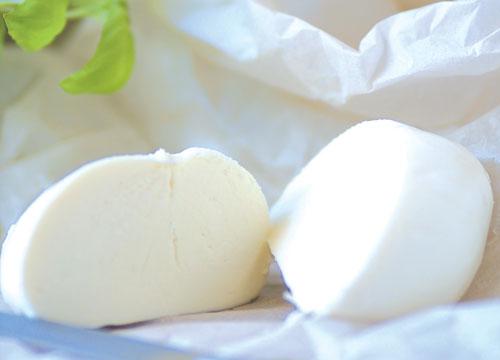For centuries the great Murrah water buffaloes have grazed on the Pontine marshes and lush pastures of Campania in the south of Italy, and their origins are shrouded in mystery. There is no clear documentation to explain their presence here in Italy, but the most appealing theory suggests that they came from Carthage, plodding over the Alps behind Hannibal and his elephants.
Until fairly recently they lived in semi-wild herds, handled by the Italian cowboys, known as butteri. However, in the last 10 years or so, buffalo farming has become a lucrative business, and the herds are now nurtured and carefully fed so that they produce high-quality milk. This milk is used to produce mozzarella di bufala, one of the glories of the southern-Italian cuisine. Buffalo milk is five times more expensive than cows’ milk but the resulting cheese has a sublime taste and texture. A similar mozzarella cheese with a more bland flavour is made from cows’ milk, and this is known as fior di latte.
Plaits, Knots and Little Eggs
Mozzarella cheese initially is made in the normal way by heating the milk and adding a coagulating enzyme. The curds form a solid mass covered by whey or siero. To make mozzarella, the solid curd is shredded by hand into small pieces, and ladles of boiling water are poured over to cook them. The water blends with the shreds to make an elastic rubbery mixture. A wooden paddle is used to stir the mixture until it reaches the correct consistency, and the malleable mass is shaped into plaits - trecci, knots - nodini, little eggs - ovoline or balls - bocconcini. The final cooling takes place in lightly salted water.
Good mozzarella should be rubbery but not tough, and the best mozzarella has drops of creamy milk stored in minute dimples in the fabric of the cheese. This cheese should be eaten fresh, and it is usually sold floating in its own whey in a plastic bag or tub. These bags should be placed in a large bowl of cold water and stored in a cool place. When mozzarella is put in a fridge the texture is ruined, and at this point it is suitable only for cooking, not eating fresh. Very fresh, mozzarella can be used to make a Caprese salad, where slices of mozzarella are interleaved with slices of ripe tomatoes and topped with fresh basil and good extra virgin olive oil. Cheese that has lost its texture in the fridge can be diced and stirred into tomato sauce before adding cooked pasta. In Italy this is known as sorrentina or vesuviana, as the melted mozzarella resembles a stream of lava.
Diane Seed has lived in Rome for over 30 years, and has written many books on Italian food. She has a cooking school for English-speaking visitors in an historic palace in the centre of Rome. For more information visit her website at www.dianeseed.com














